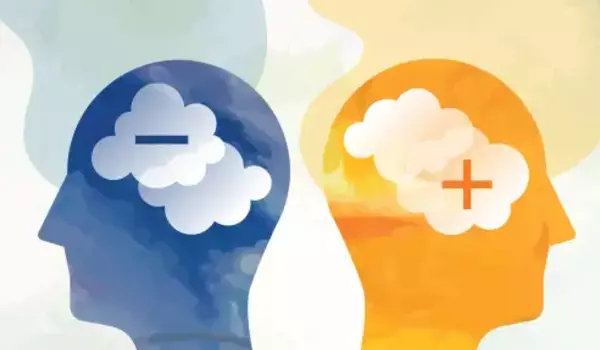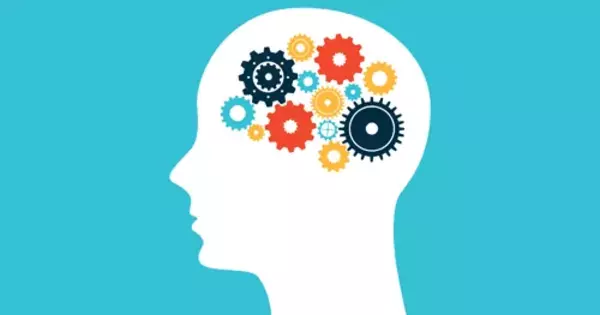Mental imagery can be an effective way to divert teens’ attention away from negative thought patterns. Mental imagery, also known as visualization or guided imagery, is the process of visualizing positive and calming scenarios or experiences in one’s mind. This technique can help teenagers redirect their attention away from negative thoughts and toward more positive and uplifting imagery.
A recent study from Oregon State University discovered that refocusing on mental imagery is a more effective distraction than verbal thoughts for adolescents who may become stuck in negative thought spirals. According to study author Hannah Lawrence, an assistant professor of psychology in OSU’s College of Liberal Arts, a short-term distraction can break up the thought spiral, allowing the person to seek help from a therapist, friend, or parent.
“When we get stuck thinking about negative things that happened in the past, it makes us feel even worse, and it leads to more difficulties regulating our emotions and regulating our bodies,” Lawrence explained. “We want to connect people to more comprehensive strategies or skills that can help us break free from those thought patterns.”
Lawrence directs OSU’s Translational Imagery, Depression, and Suicide (TIDES) Lab, which investigates risk factors and develops effective interventions for depression in adolescents, including interventions that can be scaled up to reach a larger population.
When we get stuck thinking about negative things that happened in the past, it makes us feel even worse, and it leads to more difficulties regulating our emotions and regulating our bodies. We want to connect people to more comprehensive strategies or skills that can help us break free from those thought patterns.
Hannah Lawrence
“These negative things are going to happen to all of us, so knowing ahead of time which tools we should pack in our toolbox that we can pull out to help lower our emotional reactions in the moment, just enough to get us out of those loops, will help us get unstuck,” she explained.
The study, published in the Journal of Affective Disorders, sought to determine which type of negative rumination – either verbal or imagery-based thoughts – caused a greater drop in the adolescent participants’ affect, or general mood; and also which type of thought was more effective at distracting them and assisting them in breaking out of that negative mood.
The 145 participants ranged in age from 13 to 17 and were drawn from a rural area of New England where Lawrence conducted the research. The group was mostly white and female (62%). Participants also completed a depression questionnaire, which revealed that approximately 39% of the group had clinically elevated symptoms of depression.

The researchers began by instilling a negative mood in the adolescent participants through the use of an online game designed to elicit feelings of exclusion. (After the study, researchers explained the game to the participants to help alleviate any lingering hurt feelings.)
Participants were then divided into groups and instructed to ruminate, either verbally or mentally, or to distract themselves, also verbally or mentally. Participants in the rumination group were given prompts such as “Imagine the kind of person you think you should be.” Prompts like “Think about your grocery list” were used to distract the distraction group from their negative affect.
To encourage verbal thoughts, researchers had participants practice coming up with sentences in their head describing a lemon using specific words. To encourage mental imagery, they had participants practice imagining what a lemon looked like in different conditions.
Researchers used noninvasive sensors to record electrical activity of the heart and skin conductance response as a way to measure physiological responses to the various prompts. They also directed participants to rate their current emotional affect at four different points during the study.
While there was no significant difference in the responses of the adolescents to the two types of rumination (both verbal thoughts and mental imagery had a similar effect on their mood), researchers discovered that mental imagery was significantly more effective as a distraction than verbal thoughts.
“It appears that using mental imagery helps us improve our affect as well as regulate our nervous system,” Lawrence said. “The lack of a significant result for ruminating in imagery versus verbal thought suggests that it doesn’t matter what form those negative cognitions take.” The part that appears to be the most difficult is the getting-stuck part – dwelling on these sad or anxiety-inducing events over and over.”
Researchers aren’t sure why mental imagery is so effective, but they believe it’s because imagery is more immersive and requires more effort, resulting in a stronger emotional response and a larger distraction. According to Lawrence, there is some evidence that imagining mental pictures activates the same part of the brain as seeing and experiencing those things in real life.
Lawrence discovered that some adults ruminate in only one form, whereas most teens ruminate in both verbal thoughts and mental imagery. According to her, one possibility is that these thought patterns become self-reinforcing habits, with negative images or verbal messages becoming more ingrained over time.
















